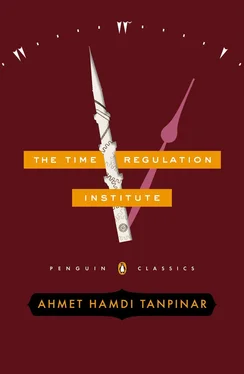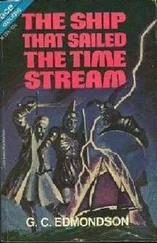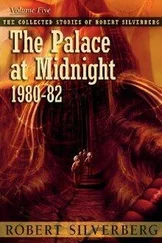Goffman, Daniel. The Ottoman Empire and Early Modern Europe . Cambridge: Cambridge University Press, 2002.
Goodwin, Jason. Lords of the Horizons: A History of the Ottoman Empire . New York: Henry Holt, 1999.
Guler, Ara. Ara Guler’s Istanbul . London: Thames & Hudson, 2009.
Hanioglu, M. Sükrü. Atatürk: An Intellectual Biography. Princeton, NJ: Princeton University Press, 2011.
Mansel, Philip. Constantinople: City of the World’s Desire, 1453–1924. New York: St. Martin’s Press, 1996.
Pamuk, Orhan. Istanbul: Memories and the City. New York: Alfred A. Knopf, 2005.
Pope, Hugh and Nicole Pope. Turkey Unveiled: A History of Modern Turkey . New York: Overlook, 1998.
Shafak, Elif. The Flea Place . London: Marion Boyars, 2004.
Tanpınar, Ahmet Hamdi. A Mind at Peace. New York: Archipelago Books, 2008.
CHRONOLOGY OF TURKISH HISTORY
1181–1407
Five emperors with the name Andronicus rule Byzantium.
1453
Fatih Sultan Mehmed II conquers Constantinople.
1500–1700
The Golden Age of the Ottoman Empire.
1730–1754
Mahmud I reigns and the empire begins to stagnate.
1512–1867
The Ottomans control Egypt but the state is often semi-autonomous due to Ottoman governors who run rogue operations.
1808–1839
Mahmud II reigns. Military, administrative, and fiscal reforms lead to the Tanzimat (reorganization) decree and reforms that aim to emulate Western models.
1839
The Tanzimat decree, a liberal charter of political, social, and legal rights, in which all races and creeds are declared equal, is ratified but complete implementation proves untenable.
1839–1876
Abdulmecid I and Abdülaziz reign. A period of fiscal extravagance and irresponsibility inspires the Young Ottoman movement to push for democratic reform and the implementation of a constitutional monarchy.
1876–1909
Sultan Abdülhamid II reigns. Accepts the new constitution and allows for a parliament to form (1877) but dissolves it a year later, citing civil unrest as the primary cause. By the end of his reign, marked by fear, paranoia, and xenophobia, a police state manages a vast network of spies and censorship of the press.
1889
The Ottoman Union (Ittihad-I Osmanı) is founded by opponents of the Abdülhamid regime. It eventually becomes the Committee of Union and Progress (Ittihatve Terakki Cemiyet) the first political party in the Ottoman Empire.
1908
The Committee of Union and Progress (CUP), composed largely of members of the Young Turks movement, revolts, demanding that a parliamentary system replace the monarchy.
1909
Abdülhamid is forced to reinstate the constitution. He is deposed by the parliament and constitutional sovereignty is established.
1913
The Second Balkan War. The Balkan league dissolves over a dispute regarding the division of spoils. CUP seizes power through a military coup and rules until the end of the First World War.
1913
The assassination of Grand Vizier Mahmut Sevket is used as an excuse by the CUP to establish a military junta.
1914–1918
First World War. The Ottoman Empire enters the war on the side of Germany. CUP leaders are widely regarded as responsible for entering the war and for getting rich by controlling the trade of staple goods such as soap and sugar.
1909–1919
The reign of Mehmed V.
1918–1922
The armistice years. British mandate in Istanbul.
1919–1922
Turkish war of independence. Mustafa Kemal Atatürk repels foreign powers and establishes a Grand National Assembly in Ankara.
1923
Turkish Republic is founded and the sultanate is abolished.
1924
The Caliphate is abolished by the Turkish Grand National Assembly and the last Caliphate Abdulmecid II is exiled.
1923–1945
Period of single party rule. Rapid modernization from a top-down revolution dismisses the fledgling nation’s Ottoman past, absorbs minorities under a single ethnic banner, and gives birth to a highly bureaucratized state.
1945–2000
A tumultuous transition to multiparty democracy marked by four different military coups.
2002–present
AKP (Justice and Development Party) in power.
PART I.GREAT EXPECTATIONS
I
I have never cared much for reading or writing; anyone who knows me can tell you that. Unless you count Jules Verne or the Nick Carter stories I read as a child, everything I know can be traced to A Thousand and One Nights, A Parrot’s Tale , the armful of history books I’ve had occasion to pass my eyes over (always skipping the Arabic and Persian words), and the works of the philosopher Avicenna. Before we established our institute, when I was unemployed and spent my days at home, I would often find myself leafing through my children’s schoolbooks; at other times, when I was left with nothing to do but recite the Koran, I would whittle away my hours in the coffeehouses of Edirnekapı and Sehzadebası, reading articles in the newspaper or the odd episode of a serial.
I should also mention the psychoanalytic studies of Dr. Ramiz, who oversaw my treatment while I was under observation at the medical institute and who was so kind to me in later years. Lest I seem unworthy of the goodwill bestowed on me by this eminent scholar, I must assure you that I’ve read his entire oeuvre without skipping a single sentence. But while no doubt his work illuminates grave and important matters of mysterious origin, it did little to influence my taste in literature or my turn of mind. During my long conversations with Dr. Ramiz — always he would speak and I would listen — I often had occasion to profit from my many hours of reading, as they offered me, if nothing else, a way of masking my ignorance. (One never does lose the good manners one learns as a child.) My father was against our reading anything but our schoolbooks — though early on he made an exception of works on Arabic grammar and syntax, such as Emsile and Avámil —and it is perhaps because he censored, or rather forbade, our reading that I lost all interest in the written word.
Nevertheless there was a time in my life when I succeeded in writing a small book. This wasn’t an act of self-promotion — a form of posturing I abhor — for I didn’t write it in the hope that others might proclaim, “Look, our friend Hayri Irdal has written a book!” Nor can I say I was compelled by a restless ambition. In due course I shall explain just how this book came into being and the purpose it served; for now let me note simply that it numbered among the publications of the institute whose doors have now been closed, though it might be more accurate to say the institute has, thanks to Halit Ayarcı’s fortuitous intervention, been consigned to continuous liquidation. If I have received any praise for this book illuminating the life and work of Sheikh Zamanı, the patron saint of clock makers, all credit must go to the founder of our institute, Halit Ayarcı, the dear benefactor and beloved friend who plucked me from poverty and despair and made me the person I am today, for indeed his excellence knows no bounds. Everything in my life that is good, beautiful, and precious belongs to this great man who was taken from us three weeks ago in a car accident. I need only recall the moment when, having invited me to tell him everything I had learned about clock making while working alongside the muvakkit Nuri Efendi, he had a flash of inspiration as profound, perhaps, as that which led to the creation of the institute itself: for not only did Halit Ayarcı discover Sheikh Ahmet Zamanı Efendi at that precise moment; he also knew at once that this man belonged to the reign of Mehmed IV.
Читать дальше












